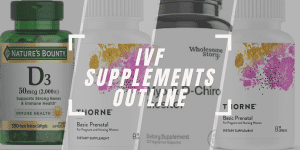
Since its inception in 2009, the Whole30 diet has become a staple among the New Year’s resolutioners trying to get their eating patterns back on track after indulging over the holidays. Search traffic for this program reliably see’s a big spike at the beginning of each new year for those seeking a nutritional “reset”.
The Whole30 officially codified their rules and rationale for the diet in 2012 when they published the book, It Starts with Food. The diet promotes itself as an accurate and reliable way to help you identify food sensitivities. But do these claims hold up? Let’s take a look!
Whole30 Rules
As its name implies, this is a 30-day elimination diet where you must avoid the following:
- Added sugar (real or artificial)
- Alcohol (not even for cooking)
- Carrageenan, MSG, or sulfites
- Dairy
- Grains
- Legumes
- Baked goods, junk foods, or treats with “approved” ingredients
- You are prohibited from stepping on the scale for 30 days
The program rules require 100% compliance for 30 days. There is no room for slip-ups and if you do, you must restart the entire program.
At the end of this 30 day period, you are encouraged to reintroduce the previously eliminated food to help you identify food sensitivities. But how good is it at identifying these problematic foods?
Whole30 For Identifying Food Sensitivities
The core purpose of the Whole30 is to eliminate foods in hopes of identifying possible “triggers”. The creators describe the Whole30 as “…a “reset,” but at its heart, the Whole30 is an elimination diet.” But we run into some concerns when we look at how the elimination and reintroduction phases are designed.
The main issue is that the Whole30 approach to elimination and reintroduction of foods is not appropriately designed in a way that would allow accurate and reliable identification of food sensitivities. They state that their protocol can help identify food allergies and sensitivities and, to do so, you must “…completely eliminate your exposure to any potentially inflammatory compound during your Whole30.”
Elimination of Common Food Allergens from Whole30 Diet
4 of the 8 most common food allergens are never eliminated from the diet. These are:
- Eggs,
- Tree nuts,
- Fish,
- Shellfish.
If the goal is to identify potentially problematic foods, elimination of the 8 most common food allergens seems like an obvious place to start.
Additionally, they instruct you to avoid ingredients like sulphites and remove foods with phytates (such as grains) — but they permit you to consume foods high in both of these, such as balsamic vinegar and flax and pumpkin seeds.
Elimination diets take a lot of time and commitment and shouldn’t be undertaken unnecessarily or casually. It’s possible these types of elimination diets can cause or exacerbate food intolerances.
You may be interested: What Is Intuitive Eating?
3 Whole30 Diet Tips to Identify Problematic Foods
If you are thinking about undertaking an elimination program, here are a few tips to keep in mind.
Tip 1: Slow your roll
You don’t have to eliminate multiple foods or food groups at once. If there’s one you think is causing you issues, focus on that first. This has the added advantage on being a bit less disruptive to your overall eating pattern.
Tip 2: Test multiple times
Beware of false positives! This is when it appears you think you have a food sensitivity when you actually do not. When you abstain from eating certain foods for a time, you can lose important enzymes and gut bacteria that aid in the digestion of these foods. When you reintroduce this food, you may experience some unpleasant symptoms that are really just due to the lack of these enzymes or bacteria. These will build back up over time as you continue to consume the food.
Do multiple elimination and reintroduction phases to see how you respond, not just one. Why? You are looking to make sure that the food or foods in question are reliably producing the unwanted symptoms (i.e., stomach upset, fatigue, etc).
Imagine that you suspect peanuts give you a headache. You stop eating peanuts for 7 days and then eat a handful on the 8th day. An hour later, you experience a headache. You then eliminate them for another 7 days but when you consume them again on day 8, no headache occurs.
Was it the peanuts that caused the headaches or something else? If you do a few rounds of peanut elimination and reintroduction and they give you a headache every time, this gives you greater confidence that peanuts are your headache trigger.
Tip 3: Talk to a healthcare provider
If you think you have a food allergy, it may be best to seek out a medical provider that can walk you through the ins and outs of food allergy testing. They may recommend the following tests to help you accurately identify a food allergy.
- Oral challenge test, where you ingest a small amount of the potential food allergen under close supervision
- Elimination diet, which may consist of multiple elimination cycles
- Skin prick test, where your skin is exposed to a small amount of the potential food allergen
- Blood test for IgE antibodies
Bonus: Video from Whole30 Diet Creator
A Final Thought
Don’t needlessly eliminate a food or entire food group without thoroughly doing a few food elimination/reintroduction rounds a number of different times. Unnecessarily eliminating too many foods or food groups can increase your risk for nutritional deficiencies.
Image credits: Chantal Garnier on Unsplash and Whole30 Book








One Response